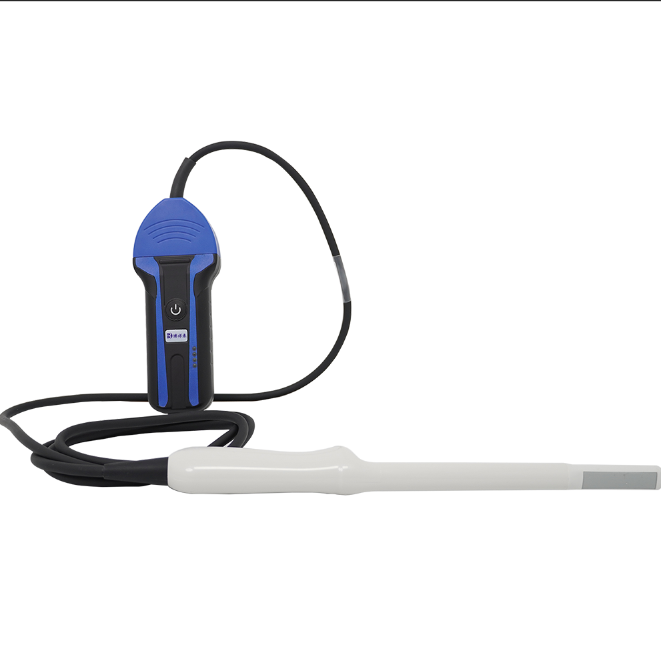Ultrasound technology is a powerful tool in sheep farming, commonly used for pregnancy diagnosis, reproductive health assessments, and general veterinary care. Setting up for an ultrasound on sheep requires careful preparation to ensure accurate results, minimal stress for the animal, and an efficient workflow. This guide outlines the key steps to set up for a Veterinary ultrasound for sheep.

1. Prepare the Equipment
Choose the Right ultrasound machine
Sheep-specific ultrasounds often involve compact, portable machines due to the nature of fieldwork and small animal size. Key features to look for:
- Probe Type: Linear probes (5-10 MHz) are ideal for scanning shallow structures like reproductive organs.
- Portable Design: Lightweight, battery-operated machines are perfect for on-site use.
- Durability: Ensure the equipment can handle outdoor environments, especially for farm visits.
Supplies to Gather
- Ultrasound gel for optimal probe contact.
- Clippers or shears for preparing the scanning area.
- Disinfectant wipes and towels for cleaning equipment and the animal.
- Gloves for hygiene and operator safety.
2. Prepare the Environment
Choose a Suitable Location
The scanning environment should be quiet and safe to keep the sheep calm. Consider:
- A pen or handling area with minimal distractions.
- A sheltered space to protect the equipment and sheep from weather conditions.
Restrain the Sheep Safely
Proper restraint is critical for safety and image accuracy. Methods include:
- Manual Restraint: Hold the sheep securely in a seated or standing position.
- Crates or Small Pens: Use a confined space to minimize movement.
3. Prepare the Sheep
Clipping the Scanning Area
Wool can obstruct the ultrasound waves, so it’s essential to clip the area to be scanned. For pregnancy checks:
- Clip the wool near the udder or lower abdomen where the probe will be applied.
- Use clippers or shears to create a smooth surface.
Clean the Skin
Remove dirt and debris with a damp cloth to improve contact and imaging quality.
4. Apply Ultrasound Gel
Apply a generous amount of ultrasound gel to the probe or directly to the sheep’s skin in the scanning area. The gel eliminates air pockets, allowing sound waves to travel effectively for clearer imaging.
5. Position the Sheep and Probe
Pregnancy Diagnosis
For transabdominal ultrasound:
- Position the sheep on its back or side for optimal access to the lower abdomen.
- Stabilize the animal using assistants or a cradle if necessary.
Other Diagnostic Scans
For imaging other structures, adjust the sheep’s position to allow clear access to the target area. Ensure the sheep is comfortable to reduce stress and movement.
6. Set Up the Ultrasound Machine
- Adjust Frequency: Use higher frequencies for clearer images of shallow structures.
- Optimize Gain and Depth Settings: Fine-tune the settings to match the area being scanned.
- Choose the Correct Preset: select a preset specifically for sheep or small ruminants, if available.
7. Perform the Ultrasound Examination
- Begin by sweeping the probe across the target area to locate the structure of interest.
- Adjust the probe angle and pressure for the best image quality.
- Record or save images for further evaluation and documentation.
8. Post-Procedure Cleanup
- Clean the Probe: Wipe the probe with a disinfectant to remove gel and prevent contamination.
- Remove Excess Gel: Wipe off any remaining gel from the sheep’s skin.
- Sanitize Equipment: Disinfect clippers, towels, and other tools used during the procedure.
Tips for a Successful Ultrasound Setup
- Calm Handling is Key: Speak softly and handle the sheep gently to reduce stress.
- Backup Supplies: Always have extra gel, clippers, and batteries on hand.
- Operator Training: Ensure the veterinarian or technician is trained in sheep anatomy and ultrasound techniques.
Conclusion
Setting up for a veterinary ultrasound for sheep requires careful planning, the right equipment, and proper animal handling. Whether you’re conducting a pregnancy diagnosis or assessing overall health, following these steps ensures accurate imaging and minimal stress for the sheep. By mastering the setup process, veterinarians and farmers can enhance flock health and productivity.
FAQs
Q: How early can pregnancy be detected in sheep with ultrasound?
A: Pregnancy can typically be detected as early as 30 days post-breeding with ultrasound.
Q: Do all sheep need to be clipped for an ultrasound?
A: Yes, clipping improves image quality by ensuring proper contact between the probe and the skin.
Q: Is sedation necessary for sheep ultrasounds?
A: Sedation is rarely needed; proper restraint and a calm environment are usually sufficient.
By optimizing your setup process, you can make the most of ultrasound technology, providing better care for your sheep and improving the efficiency of your veterinary practice or farm operations.
tags: Veterinary UltrasoundVeterinary Ultrasound for Sheep


